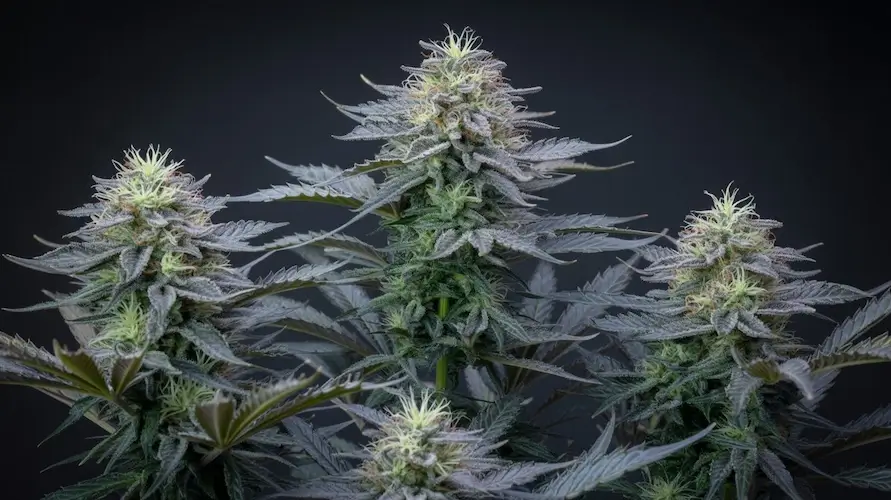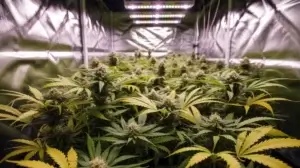Omakase Strain Review: Redefining Craft Cannabis

Omakase Strain Overview
-
Strain Name: Omakase
-
Type: Balanced hybrid (slightly indica-leaning)
-
THC: 23%–30%
-
Dominant Terpenes: Limonene, β-Caryophyllene, Myrcene, Linalool, Ocimene, Humulene
-
Aroma: Citrus, candy, yuzu, cream, peppery spice
-
Flavor: Sweet tropical fruit, lemon candy, vanilla mochi
-
Flowering Time: 56–65 days
-
Yield: Medium-high
-
Ideal For: Creative flow, stress relief, sensory enjoyment
-
Best Grown: Indoors or in greenhouse environments
Introduction: My First Encounter With the Omakase Strain
The first time I encountered the Omakase strain, it was displayed like fine art—a few perfect nugs glistening inside a small glass jar, labeled in minimalist Japanese-inspired typography. The aroma was what stopped me mid-conversation: a rush of bright citrus, sweet candy, and something subtly savory I couldn’t quite name. It felt less like opening a jar of cannabis and more like stepping into a high-end patisserie.
Later that night, when I lit up my first bowl, I finally understood why connoisseurs compare this strain to a chef’s tasting menu. Each inhale revealed a new layer—sweet at first, then creamy, then gently spiced on the exhale. Within minutes, my mood lifted and my body eased into a calm, centered energy. It wasn’t just another smoke session—it was an experience.
That’s what the Omakase strain does best. It invites you to surrender control—to “leave it up to the chef”—and enjoy the curated symphony of flavor, aroma, and effect that follows.
The Origins of Omakase: A Name Rooted in Craft and Intention
Just as in the Japanese dining tradition, in which omakase means “I’ll leave it up to you,” this strain embodies a spirit of trust and expertise. It’s the cannabis equivalent of a curated tasting menu—a showcase of the breeder’s best work, selected for flavor, balance, and aesthetic perfection.
Emerging from boutique West Coast grow circles after 2018, the Omakase strain quickly became a talking point among craft cultivators. Small batches, limited drops, and heavy resin production made it a favorite among those who chase jar appeal as much as potency. While no single breeder has publicly claimed ownership, the strain’s meticulous selection and elite presentation hint at roots in California’s top-tier dessert-hybrid lineage.
Growers describe Omakase not as a mass-market seed line but as a chosen phenotype—the best expression from an extensive pheno-hunt. Like a master chef refining a recipe, Omakase represents a breeder’s final course, the standout dish designed to impress even the most discerning palate.
Appearance: Frosted, Colorful, and Photo-Ready
The Omakase strain commands attention from the moment you lay eyes on it. Its buds are medium to large, dense, and almost too pretty to grind. Tight calyx stacking gives each nug a chunky structure, while a heavy layer of milky trichomes makes it look like it’s been dusted with powdered sugar.
Under natural light, shades of lime and forest green are streaked with deep lavender and violet hues—anthocyanin pigments that express beautifully when night temperatures dip in late flower. The orange pistils curl into the frosty resin field, creating a warm contrast that enhances the strain’s visual depth.
Pick up a nug, and you’ll notice it’s sticky but not greasy—proof of thick, intact trichome heads. That resin coverage not only contributes to the strain’s bag appeal but also makes Omakase a stellar candidate for solventless extractions like live rosin or hash.
Aroma: A Symphony of Citrus, Candy, and Cream
Open a jar of Omakase, and the air fills with a burst of candy-bright citrus—think yuzu zest over tropical fruit and mochi ice cream. The first wave is sweet and tangy, driven by high limonene and ocimene levels. Beneath that brightness, subtle cream and floral undertones soften the edge, courtesy of linalool and humulene. Finally, a grounding base of pepper and spice from β-caryophyllene rounds out the bouquet, ensuring the scent lingers long after the lid is closed.
When ground, the aroma intensifies—juicy, fresh, and mouthwatering. Depending on phenotype and cure, some batches lean toward strawberry lemonade, others toward candied mango. Either way, it’s one of those strains that perfumes the entire room before you even spark it.
I’ve opened jars of hundreds of strains, but few have this kind of balance—sweet without being cloying, bright without being harsh. It smells like summer and sophistication all at once.
Flavor: Citrus Candy With a Creamy Finish
The flavor of the Omakase strain delivers just what the aroma promises. On the inhale, the smoke is light and sweet, bursting with citrus zest, tropical fruit, and a touch of berry. On the exhale, a smooth creaminess emerges—like vanilla mochi or sweet rice—and ends with a faint peppery tingle on the tongue.
Vaping Omakase at lower temperatures (around 175°C/347°F) amplifies the citrus and candy notes, while higher temps (190°C/374°F and above) bring out the warm, spicy, and woody undertones. The smoke is silky and expansive, with no harshness even in larger hits—a sign of good curing and clean flush.
Every puff feels layered, like tasting each course of a carefully plated meal. It’s no wonder people call Omakase “the chef’s strain.”
Effects and Experience of the Omakase Strain
The Omakase strain offers a balanced hybrid experience that starts bright and ends serene. Within minutes of inhalation, a gentle wave of energy sweeps in—euphoric, creative, and slightly giggly. Colors may appear more vivid, music feels fuller, and mundane activities suddenly seem more engaging.
About 20 minutes in, the high settles into a comfortable rhythm. A light body calm replaces any edge from the initial onset, grounding the experience without dulling it. You feel focused yet relaxed—ideal for creative projects, cooking, or simply savoring a meal.
In my own sessions, Omakase has been a go-to strain for writing and brainstorming. It keeps the mind agile and uplifted while dissolving stress, allowing me to flow through work effortlessly. When the high fades after about two hours, the descent is soft and gradual, leaving me refreshed instead of drained.
Therapeutic Benefits: Elevating the Mind, Easing the Body
Beyond its connoisseur appeal, the Omakase strain offers therapeutic potential for recreational and medical users. Its terpene synergy—particularly the pairing of limonene and β-caryophyllene—supports mood elevation and stress reduction, while moderate myrcene and linalool levels help calm the body.
Commonly reported benefits include:
-
Stress and anxiety relief: The euphoric onset promotes positivity and mental clarity.
-
Mild pain and tension reduction: The relaxing body high helps ease muscle tightness.
-
Enhanced focus and creativity: Many users find it ideal for artistic or sensory activities.
-
Mood support: Its bright, citrus-driven terpene profile combats fatigue and low mood.
Because Omakase typically tests between 23% and 30% THC, dosage control is a must. Beginners should start small, while experienced users can explore its full spectrum of effects.
How To Grow the Omakase Strain
The Omakase strain rewards attentive cultivators who prioritize aroma preservation and trichome health. It performs exceptionally well indoors or in light-deprivation greenhouses, where environmental conditions can be fine-tuned.
Growth characteristics:
-
Medium stature, moderate stretch (1.5x–2x post-flip)
-
Strong lateral branching—excellent for SCROG or manifold training
-
Dense bud formation with heavy resin coverage
-
Flowering time: 56–65 days
Environmental tips:
-
During flowering, keep canopy temperatures between 24–26°C (75–79°F) and humidity around 50–55%.
-
Drop nighttime temps by 2–3°C in the final two weeks to encourage purple hues.
-
Provide strong light (800–1000 µmol/m²/s PPFD) without excessive heat to preserve monoterpenes.
Feeding and care:
-
Maintain moderate EC (1.8–2.2) during peak bloom with a phosphorus- and potassium-forward regimen.
-
Supplement calcium and magnesium to support trichome density.
-
Flush thoroughly before harvest for a clean burn and pure flavor.
When grown correctly, Omakase delivers resin-dripping flowers that test high in both THC and total terpenes. Expect yields of 450 to 600 g/m² indoors, depending on training and environment.
User Reviews: What the Community Is Saying About Omakase
“Omakase tastes like fruit candy and citrus soda—it’s wild how smooth it is. Great mood lift, zero crash.” — @TerpTaster
“This is the strain I pull out when I want to impress friends. The jar appeal is insane, and the high is happy but balanced.” — L. Chavez
“I’ve grown Omakase twice, and both runs were winners. Great bag appeal, heavy resin, easy to trim.” — GrowerJPN
“Best dessert-style strain I’ve tried since Zkittlez. Bright, uplifting, and the flavor just keeps going.” — A. Patel
Across dispensary reviews and grower forums, fans consistently highlight its complex flavor, smooth smoke, and functional euphoria. Omakase is widely praised as a “session strain” that satisfies both the head and palate.
FAQs About the Omakase Strain
Q: What is the Omakase strain?
A: The Omakase strain is a boutique hybrid inspired by the Japanese dining tradition. It’s known for its layered citrus-candy aroma, creamy finish, and refined high that balances euphoria and relaxation.
Q: What are the genetics of Omakase?
A: While exact lineage is proprietary, Omakase is believed to descend from Zkittlez, Gelato, and Biscotti-era hybrids, placing it firmly within the dessert strain family.
Q: Is Omakase indica or sativa?
A: It’s a balanced hybrid with a slight indica lean, offering both mental stimulation and physical calm.
Q: How potent is the Omakase strain?
A: Omakase typically tests between 23% and 30% THC, making it a potent choice for experienced users.
Q: What does Omakase taste like?
A: Expect a mix of citrus candy, tropical fruit, and creamy vanilla rice, with a subtle peppery finish.
Q: What are the dominant terpenes in Omakase?
A: Limonene, β-Caryophyllene, Myrcene, Linalool, and Ocimene form its signature bright and balanced aroma.
Q: How long does Omakase take to flower?
A: Flowering time is eight to nine weeks, or roughly 56 to 65 days, depending on phenotype and environment.
Q: Is Omakase good for extraction?
A: Yes—its dense trichome coverage and intact gland heads make it ideal for solventless rosin or live resin production.
Q: What effects does Omakase produce?
A: Users report uplifted mood, mild body relaxation, creative focus, and sensory enhancement without couchlock.
Q: What medical benefits are associated with Omakase?
A: Many use it to manage stress, anxiety, fatigue, or mild pain while maintaining clarity and motivation.
Q: Is the Omakase strain beginner-friendly?
A: Its potency demands respect, but its smooth smoke and balanced effects make it approachable with careful dosing.
Final Thoughts: Why the Omakase Strain Deserves Its Hype
The Omakase strain represents the evolution of modern cannabis craft—where flavor, aroma, and effect intertwine like a perfectly composed meal. From its dazzling jar appeal to its candy-bright citrus bouquet and uplifting high, every element feels intentional.
This is a strain for those who appreciate nuance, for smokers who’d rather sip than gulp, and for cultivators chasing perfection in both appearance and terpene preservation. Like a fine dining experience, Omakase isn’t about abundance—it’s about quality, balance, and leaving you wanting just one more taste.
If cannabis had Michelin stars, Omakase would earn at least one.
Now that you know all about this illustrious hybrid, shop the collection of regular, feminized, and autoflower cannabis seeds at Seeds Here Now. Looking for more in-depth strain reviews? Check out our review of the King Runtz strain.
Suggested Articles
;)
;)
;)






 14 Nov 2025
14 Nov 2025  9 min read
9 min read


 October 25, 2025
October 25, 2025 


RESPONSES (0)
No responses yet. Be the first to respond!